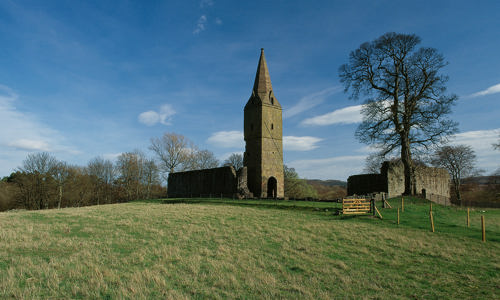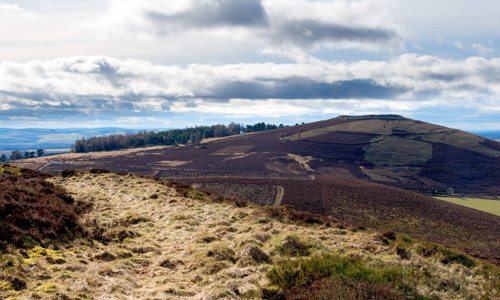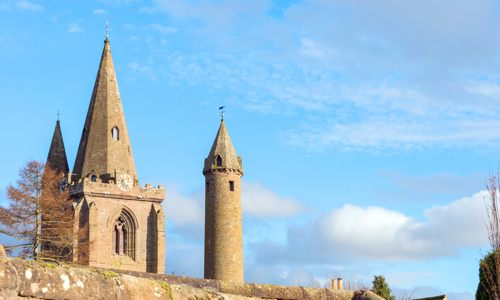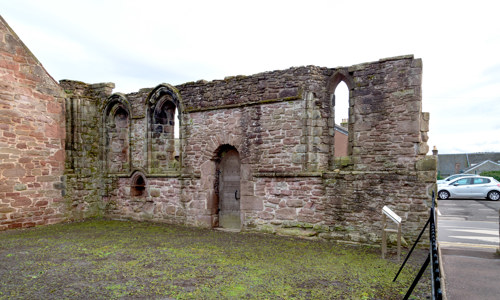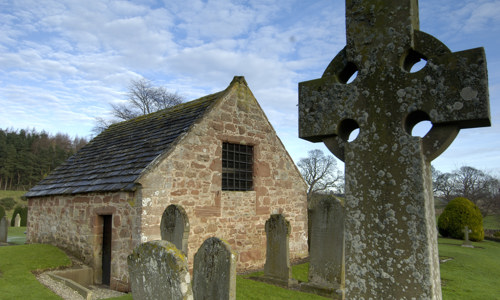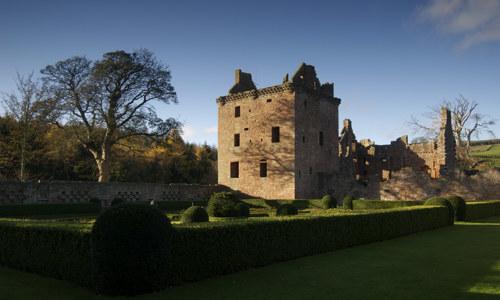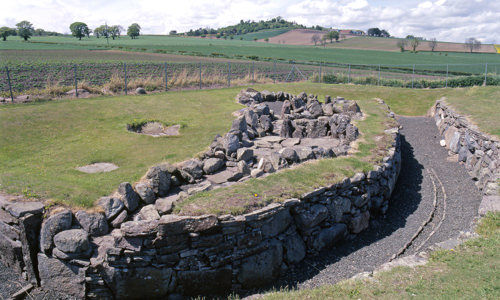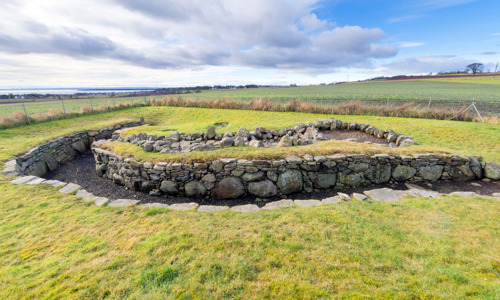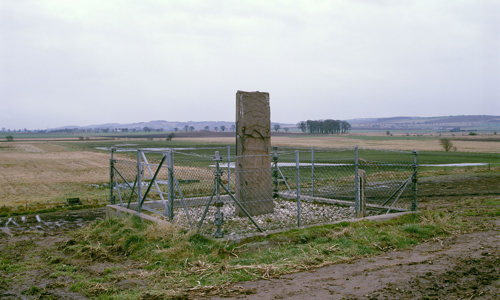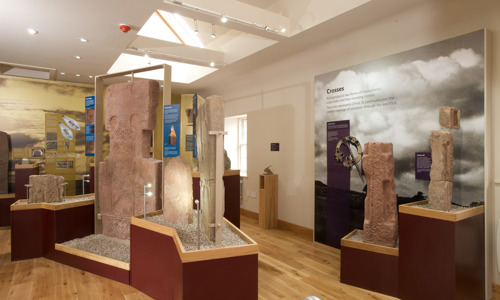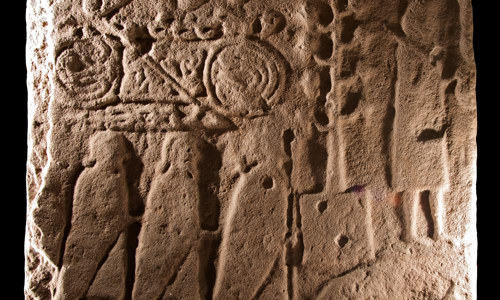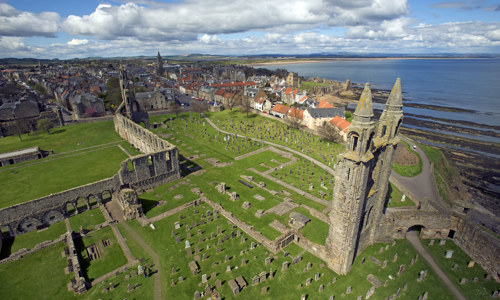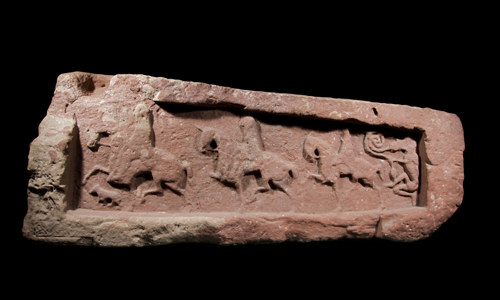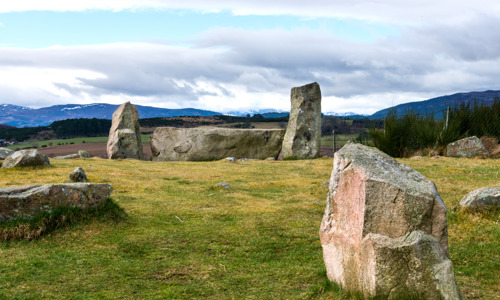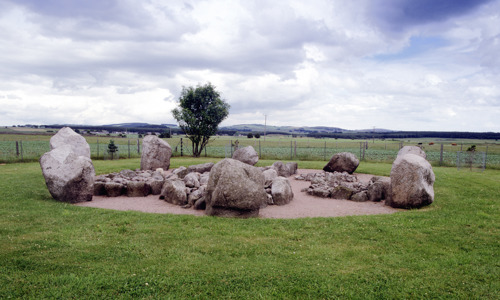History
The three roadside stones were found in a nearby field. They have been moved to what may be their original sites.
The southern roadside stone
This unshaped boulder is highly eroded, but it may bear the traces of a curving symbol. Its function is unclear, but it may be associated with the nearby Finavon fort, which could have been the residence of a Pictish chieftan.
The northern roadside stone
Judging from the prehistoric cup marks on its back, this stone is probably a prehistoric standing stone reused by the Picts. It bears three of the distinctive symbols commonly found on Pictish symbol stones:
- a serpent
- a double-disc and z-rod
- a mirror and comb
The roadside cross-slab
The cross-slab is an extraordinary monument. It’s carved on all sides, featuring:
- a cross with worshipping angels
- two ornate Pictish symbols
- a hunting scene
- the biblical king David fighting a lion
The Pictish symbols demonstrate a continuity with the two earlier stones along the road, though the introduction of Christian imagery shows the impact of Christianity’s arrival. The biblical iconography would have conveyed specific messages to the people who saw it.
The churchyard cross-slab
This is a magnificent piece of sculpture, considered one of the finest surviving examples of Pictish carving.
On one side it features a fine cross with elaborate interlace decoration on a backdrop of interlaced animals. The side of the stone facing the church depicts a battle.
This scene may commemorate the Battle of Nechtansmere, which was once thought to have taken place near Dunnichen, 10km south of Aberlemno, in AD 685. King Ecgfrith of Northumbria was killed in this battle, ending the Anglian occupation of Pictish territory. The location of the battle is now debated and may actually have taken place much further north.


